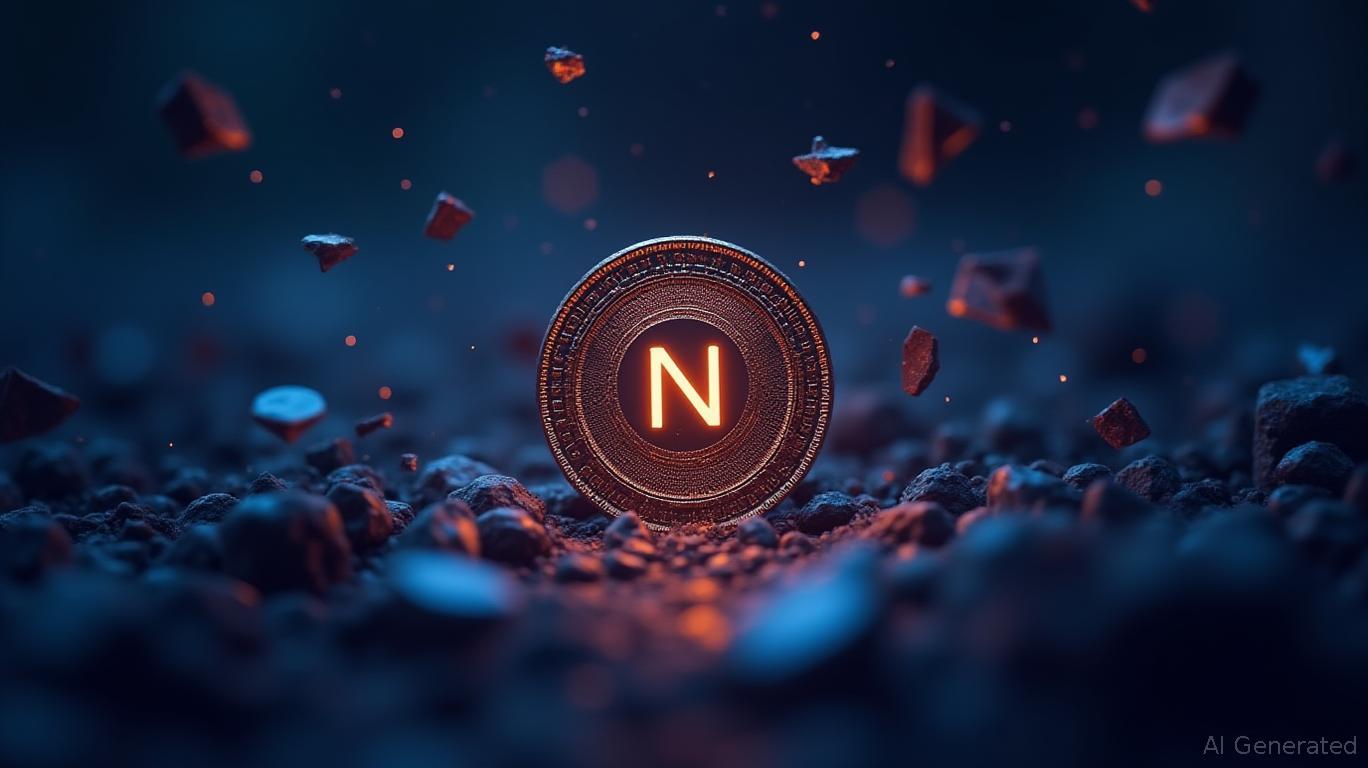Private Capital Soars to $22 Trillion: Progress or Potential Threat?
- Private capital markets now exceed $22 trillion, rivaling global economies as companies delay public listings and favor private funding for flexibility and cost savings. - Private equity outperforms public markets by 6% annually, while opaque lending practices in $1.7 trillion private credit raise risks highlighted by Moody's and Capital Economics. - Rapid private credit growth (20% annual U.S. expansion since 2010) faces scrutiny over hidden leverage, with JPMorgan's Dimon warning of systemic "cockroach
The private capital sector has surged to an immense $22 trillion, putting it on par with the world’s second-largest economy, according to
Over the past decade, private equity has delivered annual returns that outpace the S&P 500 by an average of six percentage points, attracting investors with the allure of greater profits and more operational freedom. Companies also avoid the regulatory expenses tied to public markets, which BofA estimates to be roughly 4% of the median U.S. firm’s market value. Additionally, private markets have demonstrated more resilience than public ones, with steadier fundraising and less vulnerability to economic shocks, according to the Investing.com report.

Yet, the swift rise of private credit—a $1.7 trillion segment within the private capital universe—has sparked concerns.
Capital Economics has also voiced apprehension, highlighting the unsustainable speed of private credit’s expansion. The U.S. private credit market has grown by 20% each year since 2010, and analysts caution that this pace cannot last. "With so little public data on credit quality, assessing the true risks is difficult," they observed, adding that investors are already factoring in possible losses. JPMorgan CEO Jamie Dimon has issued similar warnings, likening hidden dangers in private lending to a "cockroach" scenario—where one problem hints at more beneath the surface, as mentioned in a
The discussion around the risks and rewards of private capital also touches on major deals and tech investments. Meta’s $30 billion data center project in Louisiana—the largest private capital transaction to date—illustrates how private credit is powering infrastructure growth. However, with 95% of generative AI initiatives reportedly failing to generate profits, critics warn against excessive borrowing. "We take a cautious approach to forecasting future cash flows because their trajectory is so uncertain," said Ruth Yang of S&P Global Ratings, emphasizing the unpredictability of long-term AI infrastructure returns, as noted in a
Regulators and investors are now wrestling with the challenge of encouraging innovation while maintaining oversight. Although private capital provides adaptability and control, its lack of transparency could introduce systemic risks. As the boundaries between public and private markets become less distinct, this $22 trillion asset class is transforming global finance—offering both extraordinary prospects and significant hurdles.
Disclaimer: The content of this article solely reflects the author's opinion and does not represent the platform in any capacity. This article is not intended to serve as a reference for making investment decisions.
You may also like
GOP and Democrats Revise District Boundaries Amid 2026 Battle for Control
- Trump's mid-decade redistricting push faces logistical, legal, and political challenges in GOP-led Midwest states, threatening 2026 midterm control. - Virginia Democrats counter with special session to redraw districts, aiming to gain three House seats and challenge GOP gerrymandering after California's similar move. - Texas, NC, and MO enact pro-Republican maps, while Indiana and Kansas GOP lawmakers struggle to secure support amid constitutional objections and moderate resistance. - Legal battles inten

XRP News Today: Investors Rush to MoonBull's Lucrative Presale as XRP and Ethereum Remain Stable

Hyperliquid News Today: Noomez's Open Presale Challenges the Speculative Frenzy in Crypto
- Noomez ($NNZ) introduces a 28-stage presale with on-chain burns and verifiable progress tracking to build long-term value in a volatile crypto market. - Its fixed 280B token supply and escalating price curve aim to create scarcity, with milestone events triggering additional burns and airdrops. - The project’s ecosystem-centric model, offering up to 66% APY staking rewards, aligns with investor demand for utility-driven crypto projects. - Despite liquidity and regulatory risks, KYC-verified founders and

Dogecoin News Update: Layer Brett's DeFi Advantage Draws Investors While Dogecoin Faces Setback
- REX-Osprey DOGE ETF, the first U.S. spot ETF for Dogecoin (DOGEUSD), launched on September 18, 2025, attracting institutional investors. - Dogecoin faces $0.20–$0.21 resistance after a 16% monthly decline, pushing investors toward Layer Brett (LBRETT) as an alternative. - Layer Brett, an Ethereum-based meme-DeFi hybrid, offers staking rewards, low fees, and 600% annualized returns, drawing crypto enthusiasts. - With $4.4M in funding and 10B tokens, Layer Brett combines utility and community incentives, p
